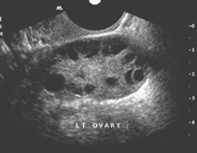Peer Reviewed
Feature Article Women’s health
The infertile couple: assessment and treatment options
Abstract
The number of couples seeking infertility therapy is increasing as treatment options improve and women postpone starting a family. GPs are ideally placed to perform initial investigations, focusing on tests of ovulation, sperm production, tubal patency and uterine structure.
Key Points
- The number of couples seeking advice on infertility is increasing, as treatment options improve and as women postpone starting a family.
- Assessment of infertility should generally begin if a couple has failed to conceive after one year or more of regular unprotected intercourse; investigation should start earlier if there are firm clinical indications of underlying pathology.
- GPs can perform initial investigations, focusing on tests of ovulation, sperm production, tubal patency and uterine structure.
- These investigations can distinguish between sterility (i.e. no chance of getting pregnant without help) and subfertility (i.e. some hope of pregnancy without treatment).
- The treatment of infertility can be cause-based (the more clear cut the cause, the more effective its correction will be) or ‘symptomatic’ (when IVF is used to secure the wanted pregnancy more directly).
Purchase the PDF version of this article
Already a subscriber? Login here.

